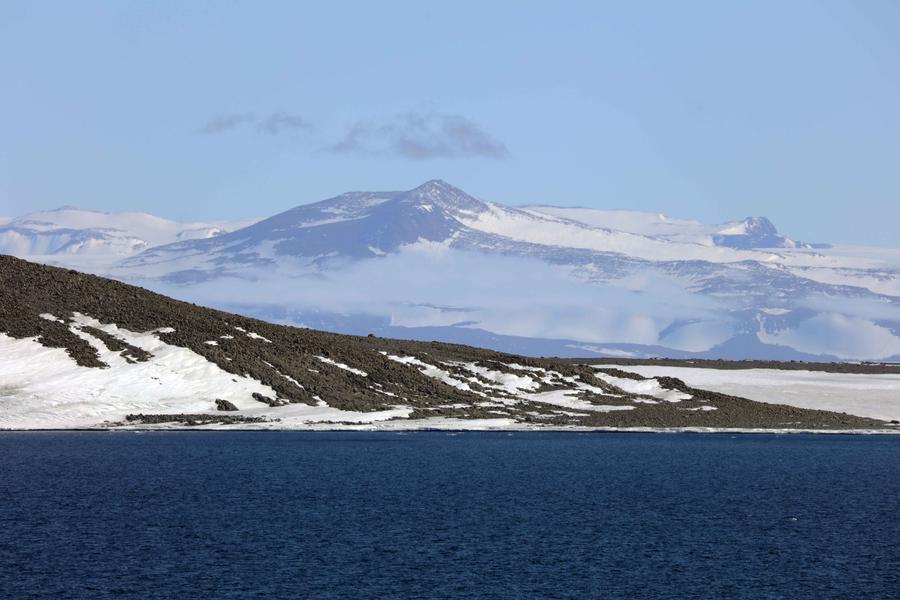
SHANGHAI – China's 42nd Antarctic expedition team set sail from Shanghai on Saturday.
"During this expedition, China plans, for the first time, to conduct scientific drilling experiments in lakes deep in the Antarctic inland ice sheet," said Wei Fuhai, leader and chief scientist of China's 42nd Antarctic expedition team.
"Using domestically built hot-water and thermal-melting drill systems, we will carry out clean drilling and sampling through ice more than 3,000 meters thick."
Antarctic subglacial lakes are characterized by extreme conditions, including high pressure, low temperature, darkness, and oligotrophy, hosting a unique ecosystem and preserving rich archives of ice-sheet history and climate change. Investigating these lakes is therefore essential for understanding sedimentary processes and the evolution of life.
To further advance understanding of Antarctica's role in global climate change, this expedition team will collect long-term observational records in key regions such as the Amundsen Sea and Ross Sea.
RELATED ARTICLES
- China's Antarctic research achieves several firsts in latest expedition
- HK college contributes to nation’s 40th Antarctic expedition
- China unveils new radio telescope in Antarctica
- Xue Long 2 brings ‘polar spirit’ to Hong Kong
"Continuously enhancing our ability to understand, protect, and utilize Antarctica is not only an inevitable requirement for China to build itself into a strong maritime nation, but also a way to make new contributions to promoting the building of a community with a shared future for humanity," said Long Wei, deputy director of the Chinese Arctic and Antarctic Administration.

Enhancing Qinling Station
China's Qinling Station in Antarctica began operation on Feb 7, 2024.
"During the expedition, we will continue to improve the scientific research building, communications network and other supporting facilities at Qinling Station, further boosting both the operational safeguard and scientific support capabilities," said Wang Tao, assistant expedition leader and head of the Qinling Station.
They will also continue to verify the reliability and adaptability of the domestically built desalination, wind power and photovoltaic systems already in place.
During the construction of Qinling Station, China deployed, for the first time, a wind-solar-hydrogen-storage hybrid renewable energy system, cutting fossil fuel consumption by over 100 tonnes annually. Even on the polar nights without wind or sunlight, the station can still operate on stored green power for about 2.5 hours, keeping scientific instruments and essential life-support equipment running on total clean energy for short periods.
The construction team will install and optimize the Qinling Station's smart logistics warehouse and an intelligent safety control system. The warehouse pairs polar robots with an AI-driven platform to enable unmanned management throughout the entire process, boosting material handling efficiency by 40 percent.

Testing new equipment
During the expedition, a suite of new technologies will be deployed and tested in the icy wilderness of the Antarctic. Core hardware for validation includes China's independently developed and manufactured Snow Leopard 6×6 wheeled vehicle and the THT550 high-power fully hydraulic towing equipment.
Additionally, multiple advanced systems such as automated observation and satellite remote sensing, along with ecological submersible buoys and a coordinated net system for krill research, will be put into practical application.
The expedition brings together a diverse team of over 500 members from more than 80 institutions on the Chinese mainland, alongside researchers from over 10 countries and regions, including Thailand, Chile, Portugal, and Hong Kong and Macao special administrative regions, fostering broader international scientific collaboration.
"The mission is supported by both the Xuelong and Xuelong 2 polar research icebreakers," said Long, adding that the team is scheduled to conclude the mission by May 2026 and return to China.


